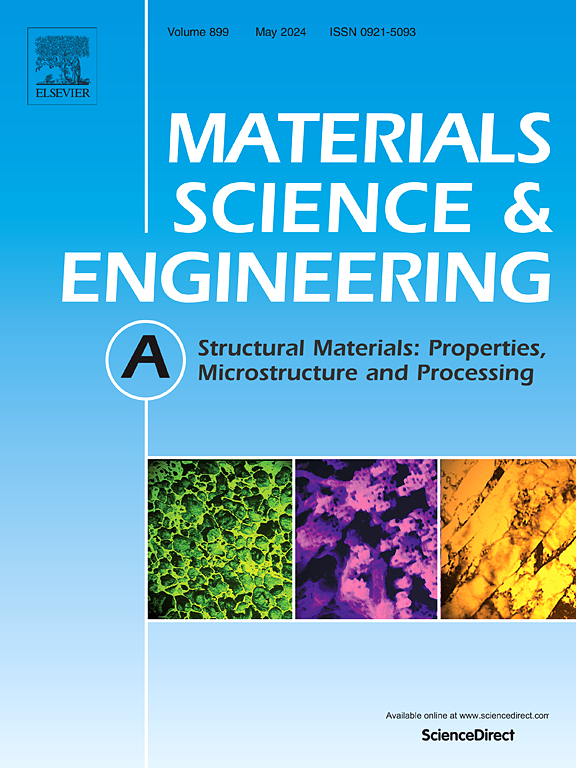Optimizing TiB2 inoculation strategies to achieve isotropic properties in AA6061 fabricated by interlayer-paused additive manufacturing
IF 6.1
2区 材料科学
Q1 MATERIALS SCIENCE, MULTIDISCIPLINARY
引用次数: 0
Abstract
Additive manufacturing (AM) has become an important technology for producing metallic parts, but the ultrafast solidification often triggers coarse columnar grains and severe hot cracking. Our previous work demonstrated that an appropriate interlayer pause (IP) strategy during laser melting deposition (LMD) can effectively alleviate hot cracking. However, the grains remain textured and filiform, leading to anisotropic mechanical properties. Building on the established optimal IP, this study introduces and optimizes TiB2 inoculation strategies for the LMD-fabricated AA6061. We found 2 wt% nano-TiB2 inoculation combining IP successfully achieves isotropic high strength and ductility (longitudinal: 301 ± 3 MPa, 8 ± 2 %; transverse direction: 310 ± 5 MPa, 7 ± 1 %). In contrast, 6 wt% nano-TiB2 inoculation and 2 wt% micro-TiB2 inoculation under the same IP yield inferior properties characterized by evident anisotropy. Microstructural investigations reveal the 2 wt% nano-TiB2 inoculation combining IP promotes a dense and uniform distribution of nano-TiB2 inoculants, which helps to eliminate cracks and results in an ultra-fine equiaxed microstructure. Conversely, excessive inoculation of 6 wt% nano-TiB2 leads to severe particle agglomeration, forming large TiB2 clusters. Similarly, with 2 wt% micro-TiB2 inoculation, numerous oversized TiB2 inoculants are observed. Consequently, both inoculation strategies can impair metallurgical bonding and re-induce various metallurgical defects, such as cracks. Furthermore, they can limit the efficiency of columnar to equiaxed transformation (CET), resulting in a relatively coarse microstructure consisting of partially columnar grains. We anticipate that the design strategy developed in this work can be extended beyond Al alloys to achieve isotropic mechanical performance.
优化TiB2接种策略以实现层间暂停增材制造AA6061的各向同性性能
增材制造(AM)已成为生产金属零件的重要技术,但其超快凝固往往会导致粗柱状晶粒和严重的热裂。我们之前的工作表明,在激光熔化沉积(LMD)过程中,适当的层间暂停(IP)策略可以有效地缓解热裂。然而,晶粒仍保持织构和丝状,导致各向异性的力学性能。在建立最优IP的基础上,对lmd制备的AA6061的TiB2接种策略进行了介绍和优化。我们发现2 wt%的纳米tib2接种组合IP成功地获得了各向同性的高强度和高延性(纵向:301±3mpa, 8±2%;横向:310±5mpa, 7±1%)。相比之下,在相同的IP下,6 wt%纳米tib2和2 wt%微tib2的接种率较低,具有明显的各向异性。微观组织研究表明,2 wt%的纳米tib2孕育剂与IP相结合,促进了纳米tib2孕育剂致密均匀分布,有助于消除裂纹,形成超细等轴组织。相反,过量接种6 wt%的纳米TiB2会导致严重的颗粒团聚,形成大的TiB2团簇。同样,用2 wt%的微量TiB2接种,可以观察到许多超大的TiB2接种剂。因此,这两种孕育策略都会破坏金相结合,并重新诱发各种金相缺陷,如裂纹。此外,它们会限制柱状到等轴转变(CET)的效率,导致由部分柱状晶粒组成的相对粗糙的组织。我们期望在这项工作中开发的设计策略可以扩展到铝合金之外,以实现各向同性的机械性能。
本文章由计算机程序翻译,如有差异,请以英文原文为准。
求助全文
约1分钟内获得全文
求助全文
来源期刊

Materials Science and Engineering: A
工程技术-材料科学:综合
CiteScore
11.50
自引率
15.60%
发文量
1811
审稿时长
31 days
期刊介绍:
Materials Science and Engineering A provides an international medium for the publication of theoretical and experimental studies related to the load-bearing capacity of materials as influenced by their basic properties, processing history, microstructure and operating environment. Appropriate submissions to Materials Science and Engineering A should include scientific and/or engineering factors which affect the microstructure - strength relationships of materials and report the changes to mechanical behavior.
 求助内容:
求助内容: 应助结果提醒方式:
应助结果提醒方式:


